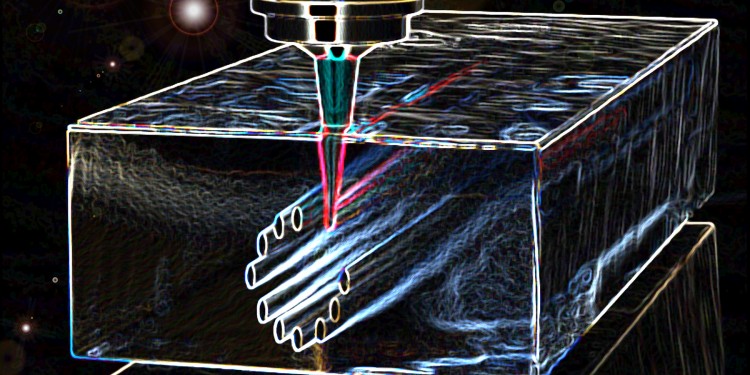
Physicists convince with their studies in optics and photonics
Two scientific publications by researchers of the Denz team at University of Münster rank among the best 30 research studies of the year 2019, rates "Optics & Photonics News". With their annual special issue in December, the journal selects the highlights in optics and photonics of the past year.
A commission of experts reviewed more than 90 international studies of the year 2019 and selected the best publications. In the last years, researchers of the team Nonlinear Photonics of Cornelia Denz at the Institute of Applied Physics of Westfälische Wilhelms-Universität Münster (WWU) were already represented with several publications in the high score list.
The honored studies:
Photonic chip in diamond
In one of the highlighted publications, Haissam Hanafi from the team of Cornelia Denz worked together with nano-physicists of the group of Prof. Dr. Wolfram Pernice, fabricating novel structures in diamond. Together, they demonstrated an innovative approach to structure so-called polycrystalline diamond in the microscale. In doing so, they developed three-dimensionally integrated photonic circuits that feature efficient waveguiding of light.
Beneath its outstanding mechanical hardness, diamond has exceptional optical properties. Especially in the field of quantum technology, this “wonder material” is considered as working horse for the second quantum revolution. This requires, for example, investigating the states of single quantum particles and their interaction. However, established methods to structure diamond were hitherto limited to planar arrangements.
The combination of readily available polycrystalline diamond with its special optical properties and the three-dimensional structuring of ultra-short laser pulses yields in this study the photonic waveguide array chip, which has especially importance in the areas of nonlinear photonics, opto-electronics and quantum-optics – in particular for the development of complex three-dimensional quantum networks on the basis of diamond. An additional partner in this research was the Fraunhofer-Institut für Angewandte Festkörperphysik in Freiburg.
Tailored laser beams
In the second honored work, Dr. Alessandro Zannotti from the Denz group innovatively transfers the effect of so-called discrete diffraction to nonlinear diffraction gratings, which allow a dynamical change of their diffraction properties, together with a research group at the University of Belgrade. The background: Diffraction drives light away from its propagation axis, e.g. after passing through an aperture. While functional materials are indispensable in optics, that is, in gratings for tunable lasers that can change their emitting wavelength largely continuously, they often are too inflexible for many purposes.
In previous works, the collaboration already applied spatially shaped laser beams with elliptical intensity distributions, so-called Mathieu beams, for fabricating optical materials with special properties. Such novel effects support the fabrication of nonlinear switches, e.g. for laser fabrication or sensing.
Original publications:
H. Hanafi, S. Kroesen, G. Lewes-Malandrakis, C. Nebel, W. H. P. Pernice, C. Denz, „Polycrystalline diamond photonic waveguides realized by femtosecond laser lithography”, Optical Materials Express 9, 3109-3114 (2019).
A. Zannotti, J. M. Vasiljević, D. V. Timotijević, D. M. Jović Savić, C. Denz, „Morphing discrete diffraction in nonlinear Mathieu lattices” Optics Letters 44, 1592-1595 (2019).
